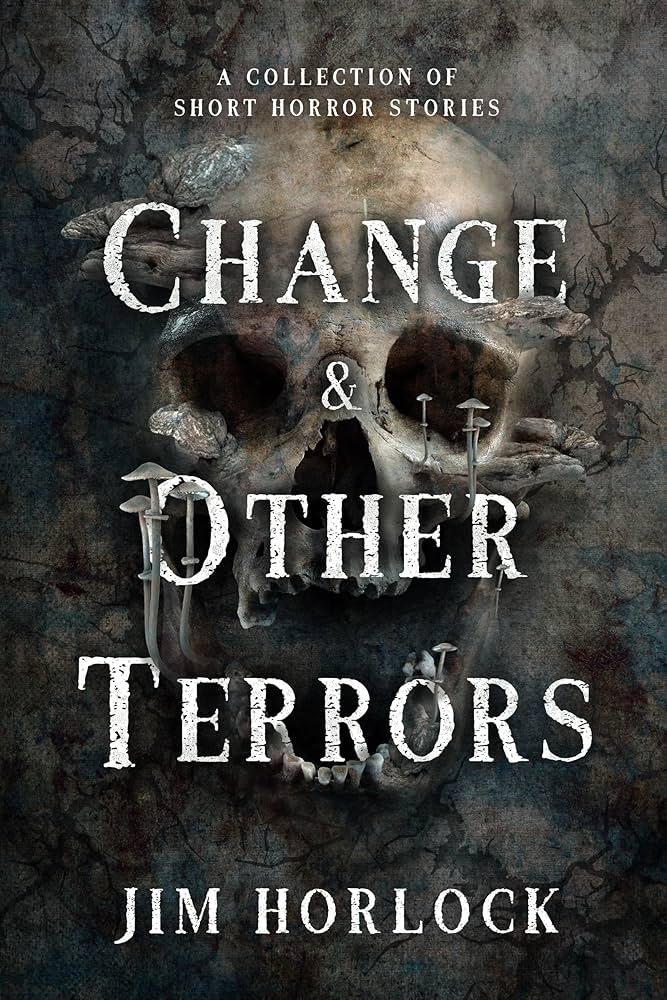You are here
Home › Books › Jim Horlock's 'Change & Other Terrors' Is Masterful Exploration Of Short Horror Fiction ›Jim Horlock's 'Change & Other Terrors' Is Masterful Exploration Of Short Horror Fiction
FTC Statement: Reviewers are frequently provided by the publisher/production company with a copy of the material being reviewed.The opinions published are solely those of the respective reviewers and may not reflect the opinions of CriticalBlast.com or its management.
As an Amazon Associate, we earn from qualifying purchases. (This is a legal requirement, as apparently some sites advertise for Amazon for free. Yes, that's sarcasm.)

In an unstable and chaotic universe, the only constant is change. From the collapse of galaxies to the passing of seasons, the mutation of bacteria and the splitting of atoms, cycles of birth, death, and renewal envelop us. People, with our finite lifespans, have attempted to defy time’s ticking hands, through science, through medicine, through construction and art. Yet art is itself an agent of change: each creative movement is the inheritor of previous endeavors, sometimes happily, other times gleefully destroying what’s come before.
One author who understands that transitory nature of existence is Jim Horlock, who explores the theme to its most frightful degree in the new Quill & Crow Publishing short horror collection, Change & Other Terrors.
The volume begins on a grisly note with ‘Limbs’: after the spread of a chemical gas that reconstitutes the bodily composition of anyone exposed to it, a lone survivor must outwit the hordes of contaminated monstrosities eager to kill him. A man infected with a bizarre fungal contagion finds himself quarantined as he slowly disintegrates in ‘Dispersion’. Stark atmosphere buttresses the narrative of a young girl whose family moves into a new apartment complex that drags its tenants ‘Into The Walls’. Workers unable to leave their office building steadily succumb to madness in the vaguely Lovecraftian ‘Exit Program Y/N’. An imaginative ending elevates the account of a teen who’s the last inhabitant of earth after the rest of humanity burrows deep into the ground for their ‘Burning Day’.
The tome’s second half commences with ‘The Seed’, a harrowing piece that follows four friends on a camping trip who encounter a peculiar backwoods cult that uses humans as ‘The Seed’ to fertilize a grove of unusual trees. The book continues with ‘Lullaby’, about an addict haunted by the ghosts of her past, then the tale of an adolescent lycanthrope undergoing a host of violent physical ‘Changes’. A man questions his own sanity every time he looks in the mirror in ‘Parasite’, while period details and a clever twist bolster ‘Druger’, the saga of a Viking village under siege by an unstoppable, bloodthirsty revenant.
Unlike novels, short stories require precision, a craft Horlock has thoroughly mastered. Every carefully-chosen sentence and phrase throughout this slim (184 page) collection is successfully utilized for maximum impact. The author imbues each of the thirteen tales with an unsettling, claustrophobic mood; characters are often trapped within their surroundings or headspaces and searching for a way out. Horlock also displays a knack for ‘body horror’, a subgenre that thrives on rearranging and modifying human physiology in any number of strange and gruesome ways, but his greatest single strength is undoubtedly the ability to concoct distinct, fully-realized worlds in only a handful of pages. Every story, no matter how short, exists in its own realm, unique from not only each other, but from the expected norms of conventional horror.
These skills are keenest in three entries deserving of special recognition. A jet full of passengers gets caught in a deadly time loop where everyone is a potentially murderous ‘Imposter’ whose memories bleed into one another. In the hazy near-future of ‘The Unseen’, citizens must protect themselves from a host of ravenous, invisible beings by using genetically-modified children as human shields. The gold medal in Change & Other Terrors, however, goes to the compilation’s concluding installment, where a woman is forced to endure seemingly endless physical and psychological torture inflicted by a fellowship interested in pushing her to the ultimate artistic ‘Epiphany’.
Horror, perhaps more than any type of storytelling, is about metamorphosis. Sometimes the process can be uncomfortable, even agonizing, but as Horlock himself asserts in ‘Epiphany’: “Change is pain, and pain is change. Only through suffering can we be set free and allowed to soar to new heights of creativity!”
I give Change & Other Terrors a well-earned 4 (out of 5) on my Fang Scale.


